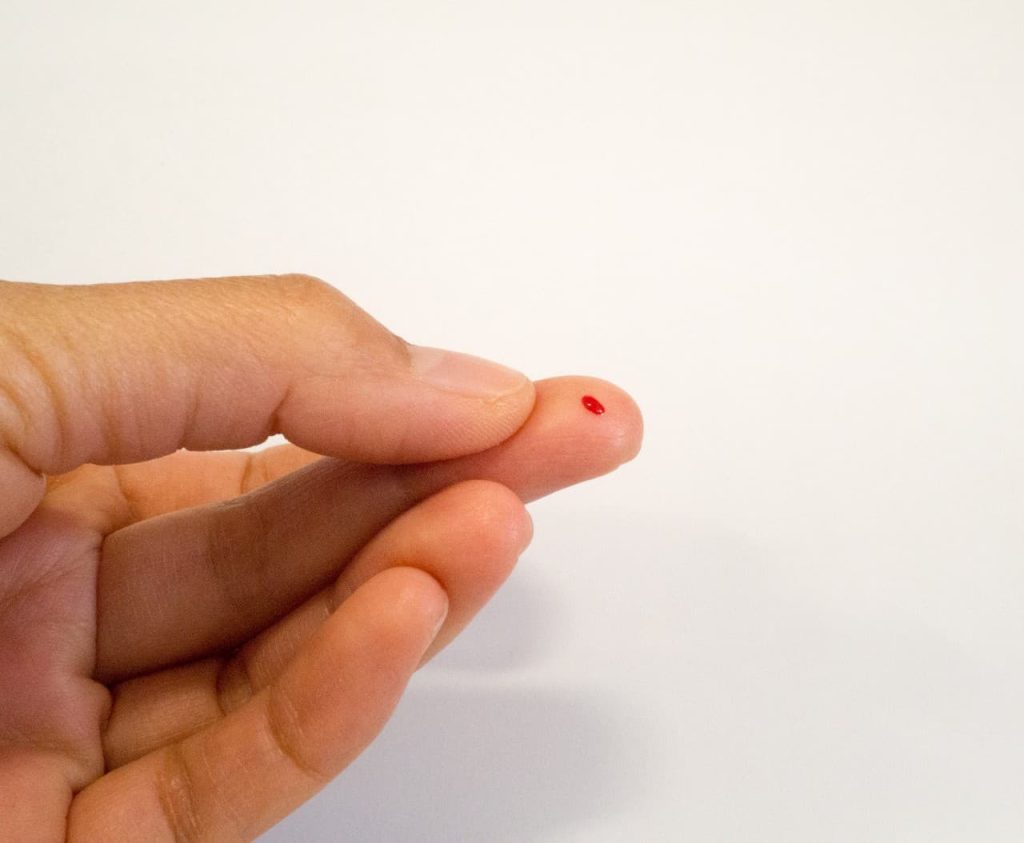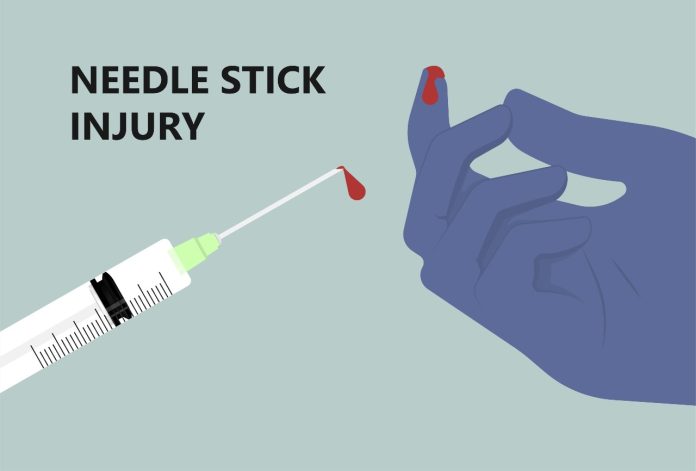Needlestick injuries occur when you accidentally prick or pierce your skin with a needle. These injuries are prevalent among health professionals because they often use hypodermic syringes as well as other needles during their routine work routine. The risk of a needlestick injury happens when disassembling or using a needle. Failing to properly dispose of a needlestick can also injure anyone who comes across them while in the garbage because they aren’t easily visible.
It’s best to protect yourself from needlestick injuries because they can find their way into the bloodstream and transmit various disease-causing organisms. While needlestick injuries are inherently severe, this article will focus on the risks associated with accidental needlestick injuries.
Table of Contents
What Are Needlestick Injuries?
The injuries that come about from needles used during medical procedures are referred to as sharps or needlestick injuries. Different sharp objects are responsible for needlestick injuries, and this includes:
- Scalpels
- Lancets
- Glass from broken equipment
- Syringes
Therefore, you need to be especially cautious when using any of this equipment to safeguard yourself from painful, needlestick injuries.
What Are The Hidden Dangers Of Needlestick Injuries?

After understanding what needlestick injuries are, the next thing you need to do is to know the hidden dangers you’re exposed to due to such wounds, and these include:
1. Risk Of HIV Transmission
HIV can be spread via needlestick injuries. And according to bloodborne pathogens training, the biggest hidden risk of needlestick injuries is the spread of this deadly virus. Needlestick injuries increase the risk of HIV transmission because the needles are sharp and can easily pierce through the skin. As a result, this enables the easy transmission of the pathogen directly from the needle into your bloodstream. This is why you must prevent exposure of your blood or body fluids to a pointed and contaminated object because it carries the risk of HIV transmission.
2. Spread Of Hepatitis B
Needlestick injuries are one of the leading causes of hepatitis B virus transmission. Hepatitis B is one of the most contagious diseases worldwide, thereby easily spreading through needlestick injury. The risk of spreading hepatitis B through needlestick injuries is significantly increased because of the high resistance of this virus to ultraviolet light. In addition, you can’t easily know needlesticks can contain viruses.
The hepatitis B virus can hide on the outside of the needle and be transferred to your hand through a tiny scratch. Because of this, it’s best to take appropriate safety measures. Doing this is necessary because this serious illness targets the liver. The virus, called HBV, could cause lifelong infection, cirrhosis of the liver, liver failure, liver cancer, and death.
3. Transmission Of Hepatitis C
Hepatitis C is a bloodborne virus that manifests in the infected person as an illness and is transmitted via the exchange of bodily fluids. Hepatitis C, which is contracted through a needlestick injury, can progress to viral infections such as HIV and other severe forms of viral infections due to the degeneration of the immune system. And with tens of thousands of healthcare workers suffering needlestick injuries each year, the risk of transmitting hepatitis C is a major public health threat.
Although hepatitis C infection can be acquired in many ways, needlestick injuries are one of the main ways this disease gets transmitted, especially among health professionals.
4. Risk Of Transmitting Syphilis
Syphilis is a severe disease, and there’s no cure at this time, so it’s vital to prevent transmission. This is the case contrary to the notion that the development of antibiotics has completely resulted in syphilis being a problem of the past. Needlestick injuries alongside sexual activity are usually the main way the bacteria enter your body. If the syphilis bacteria find their way into your body, you’ll start to experience certain problems, including:
- Meningitis
- Stroke
- Headache
- Dementia
- Swelling of major arteries such as the aorta and other blood vessels
- Sexual dysfunction in men
- Visual complications such as blindness
- Hearing loss
With such adverse effects, it’s best to prevent needlestick injuries to prevent the syphilis bacteria from entering your blood through a cut.
What Should You Do Right After A Needlestick Injury?
There are a couple of measures you should implement right away to prevent getting any of these infections discussed above. These safety measures include:
- Let the injury bleed out while holding it below running water.
- Wash the injured area right away with soap and running water. If there are splashes, it’s advisable to flush out your mouth, nose, and eyes with sterile saline or water. When washing the needlestick wound, you shouldn’t necessarily use a disinfectant or antiseptic. While doing this, ensure you don’t scrub the injury.
- You can also wash the needlestick injury using alcohol-based solutions if soap and water aren’t easily accessible.
- Head to the closest emergency hospital for immediate medical assistance.
How To Prevent Needle Injuries
Prevention is better than cure, so you should do your best to avert needlestick injuries to safeguard yourself from the dangers mentioned above. The helpful tips that can help you prevent these serious needlestick injuries include:
- Always use the standard and recommended safety precautions such as wearing gloves, gowns, masks, eye protection, and other barriers.
- Avoid activities that can place you at risk for a needlestick injury like working on a unit where your coworkers aren’t using universal precautions.
- Ensure to observe the proper recapping procedures.
- Don’t break or bend needles.
- Put used needles only in sharps containers.
- Clean cuts and punctures as soon as possible after exposure with running water and mild soap.
Takeaway
Around the world, millions of unsafe needlesticks and sharps injuries occur among healthcare workers each year, exposing them to the risk of acquiring a bloodborne virus. Exposure to contaminated needles is a serious risk also to the general public. If you didn’t understand the dangers of needlestick injuries, this guide has outlined the dangers you must know. Understanding this will help you see the need to use safer devices like single-use needles, auto-disable, and retractable syringes to help reduce the risk of infections.




